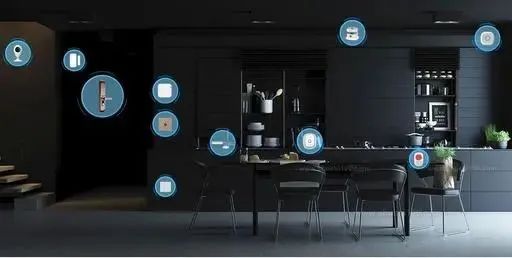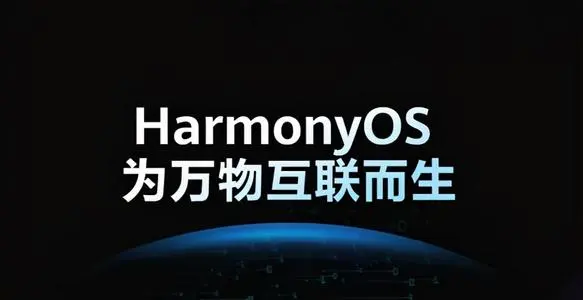Skip to content
The home, as a cell of society, is the warmest and most comfortable harbor in everyone’s heart. The smart home is like a cell of the smart city, using new generation information technologies such as the Internet of Things, cloud computing, big data, and artificial intelligence to organically connect people, objects, and devices within the home through the bond of family affection, creating an intelligent, healthy, low-carbon, comfortable, safe, and caring living style.
We can imagine how a day in a smart home would be spent. In the morning, the smart bedroom automatically adjusts to wake-up mode, soft music plays, curtains open automatically, lights turn on, sleep monitoring devices stop, breakfast equipment starts automatically, and security devices disarm; when returning home from work, hot water is ready, the air conditioning is set to the most comfortable temperature, and meals are automatically cooked; when no one is at home, the system will monitor moving objects and alert in time, close windows automatically if it rains, and continuously read and analyze various data from the home data center, providing different family members with various life suggestions at the right time.
This vision sounds like a scene from a science fiction movie, but in reality, with the development of new generation digital technologies and the upgrading of people’s living and consumption concepts, all of this is quietly becoming a reality. Although most people find it difficult to deploy a complete smart home system all at once, building a digital foundation for the future and gradually adding components is still a viable path.

Smart Home: A New Blue Ocean
The smart home is an extremely complex system, integrating various technologies such as perception, access, control, computing, and storage, and is considered the next blue ocean market. The 14th Five-Year Plan outlines the importance of “smart home” for the first time, emphasizing the need to apply technologies such as sensing control, voice control, and remote control, and to develop smart appliances, intelligent security monitoring, smart speakers, and new wearable devices, thus promoting the rapid development of the smart home industry.
In recent years, the growth rate in fields such as home networking, smart home monitoring, and smart home devices has been significant, becoming one of the main driving forces for future market growth for operators. Data shows that the smart home market alone reached 435.5 billion yuan in 2020, with a compound annual growth rate of 15.8%, and is expected to exceed 800 billion yuan by 2025.
In a smart home system, network connectivity, computing power, and the integration of operating systems are crucial and need to be solidified as infrastructure first. Therefore, it is necessary to deploy fiber optics to every room through FTTR, achieving seamless wired and wireless dual-gigabit access throughout the house, and then use gateways and set-top boxes as the computing and intelligent centers, employing a distributed operating system to manage each terminal uniformly.
In the future expansion of smart home services, operators must first shift from selling connections to selling scenarios to enhance user stickiness and ARPU. Supporting technologies must ensure devices can communicate, tasks can flow, and hardware can collaborate.
Furthermore, the service concept must shift from a single line to a whole home, enhancing family connectivity and overall business experience. Previously, operators only provided broadband services and could only manage to the optical modem, leaving the number and types of smart terminals within the home, as well as the experience perceptions, unknown. This situation must be comprehensively changed in the new era of smart homes, where all smart terminals in the family can be visualized, managed, serviced, and operated.
Additionally, the application ecosystem needs to shift from single-terminal to multi-terminal intelligent collaboration, enhancing the daily active user count of the smart home platform. Currently, the operation and collaboration of smart home devices rely on numerous fragmented apps, lacking cross-vendor interoperability, making product linkage difficult, and leading to a fragmented home ecosystem. In the future, it is necessary to achieve near-field communication and task flow at the operating system level to solve the issues of smart home connectivity, usability, and retention.
All-Optical Networking Builds the Family Connection Foundation
Why use all-optical networking FTTR to build the digital connection foundation for smart homes? This is because, in the current FTTH solution, operators can only manage to the household optical modem, and the entire home networking is actually completed by users. Due to varying levels of user knowledge about networks and differences in equipment capabilities, even basic wiring often has many issues. Users spend a considerable amount on high-bandwidth packages, but this has not been fully transformed into a gigabit experience throughout the home.
For instance, there are still many single-band optical modems or single-band routers in the current network, which only support Wi-Fi 802.11n technology on the 2.4GHz band. These devices can only support speeds up to 100Mbps. Even if users purchase leading optical modems and routers, or if the model and quality of ordinary home network cables vary, the router’s Wi-Fi experience bandwidth may still be limited to 100Mbps. Moreover, these issues can only be resolved by users themselves, as operators can only manage to the optical modem, bearing the responsibility of ensuring network access.
As a strong promoter of smart homes, Huawei can provide a comprehensive FTTR solution, deploying multiple optical fiber ports through the main optical modem and optical sockets. FTTR can lay fiber to every room, and through Huawei’s Starlink intelligent optical modem, achieve perfect gigabit coverage in each room, providing a guaranteed gigabit broadband experience for every room. Additionally, Huawei’s main optical modem supports Wi-Fi 6, matching various deployment scenarios with multiple product standards, creating a super hotspot throughout the house, with the main and sub optical modems automatically connecting to the optimal hotspot, meeting the needs of all types of households, and supporting AI acceleration through upgrade subscriptions to facilitate full-home intelligence.
Currently, over 45 provinces in the country have launched FTTR commercial packages, not only targeting household users but also expanding this solution to more scenarios, such as small restaurants, private rooms, and small exhibition halls, all capable of achieving gigabit connectivity throughout the house, where there is fiber, there is gigabit Wi-Fi, and operators can ensure complete visibility, manageability, and controllability.
Developing FTTR can help operators increase networking revenue, integrate main packages to boost user stickiness, and incentivize installation and maintenance personnel, while achieving aesthetic and rapid deployment with new transparent fiber, and realizing scale through commercial practice. Moreover, the physical bandwidth of fiber as a transmission medium is immense, and in the future, simply replacing access devices will easily achieve speed upgrades, meeting bandwidth and latency requirements for various new applications over the next 10 years. Therefore, FTTR is the best solution for building the smart home network foundation.
HarmonyOS Empowers the Smart Home Brain
With the smart home connection foundation built using FTTR, a smart brain is needed to organically connect various devices, empower various applications, and provide a good user experience. HarmonyOS serves as the bridge connecting networks and devices, creating a good user experience.
HarmonyOS is an intelligent terminal operating system designed for the era of the Internet of Everything. A single system can meet the needs of devices large and small, achieving unified operation and flexible deployment. Devices equipped with this operating system are integrated at the system level, forming a super terminal, thus enabling hardware cooperation and resource sharing among devices. Operators can deploy HarmonyOS, using gateways and set-top boxes as the computing center and smart brain, creating a brand-new smart home user experience.
Currently, the total number of third-party devices connected to the HarmonyOS smart home cloud is expected to exceed 100 million by the end of the year, with over 2,000 products already certified by HarmonyOS. The Harmony ecosystem and operators’ smart home ecosystem will co-build and share the vast family IoT market and ecosystem. The characteristics of HarmonyOS being divisible, combinable, and transferable also support a rich array of northbound applications, allowing operators’ smart home services to expand from limited applications like home networking and monitoring to more diverse business scenarios such as smart home devices and health care.
For example, HarmonyOS can enable smart audio-visual entertainment at home. Based on super hardware capabilities, home devices can easily perform basic entertainment video streaming, and this streaming is achieved at the operating system level, making it more convenient than the previous app-based approach, requiring no app installation and offering a more user-friendly experience. Additionally, compared to traditional smartphone application development, Harmony applications and services can be composed of smaller granular atomic services, which can run across different terminals based on super terminals and usage scenarios.
There are also smart kitchen scenarios. Through HarmonyOS, NFC can achieve ultra-fast networking, enabling seamless connectivity without the need to download apps, with device status visible, turning a screen-less display into a screen display, immediately accessing cloud service menus, and one-click operation on the mobile end for precise control of devices. The convenient operation makes tedious kitchen tasks easier and more enjoyable.
Currently, more and more young people are choosing a life model that integrates home working, education, and living, while current smart terminal devices operate independently, lacking effective collaboration. Through Harmony’s distributed technology, various terminals can seamlessly connect, without restrictions on the terminal, providing great convenience and strong interactivity, with access available anytime and anywhere based on high-speed Wi-Fi networks. For example, if a user is in their study using a mobile phone for a video conference, but finds the phone screen small and difficult to read documents, they can transfer the meeting task to a larger screen, utilizing the larger screen’s camera and speakers, allowing online participants to view the user’s wide-angle video conference materials more clearly.
Smart Home: A Promising Future
In summary, for operators, the smart home represents a new blue ocean; for individual users, it is an important way to change lifestyles and enhance comfort and happiness. To achieve this, one can first build a future-oriented all-optical gigabit smart home connection foundation using FTTR, then center around gateways and set-top boxes, and create a new smart home user experience based on HarmonyOS.
With the popularization of gigabit fiber networks and the maturity of the Harmony ecosystem, various devices in smart homes can connect quickly and collaborate seamlessly, forming a super terminal characterized by hardware cooperation and resource sharing. We will no longer feel the presence of networks and systems, only the convenience and speed available anytime, anywhere.
All-optical foundation, Harmony empowerment, smart home, promising future!
📚 Selected Previous Articles:
🔗: China Mobile’s “5G FUN Theater” officially opens! Let more people see good movies
🔗: Latest Rankings! 2021 China’s Top 500: Telecom and Unicom make the list, Huawei remains on top, and Mobile surprises…
For more industry insights, recruitment, and valuable content, please scan to add WeChat









